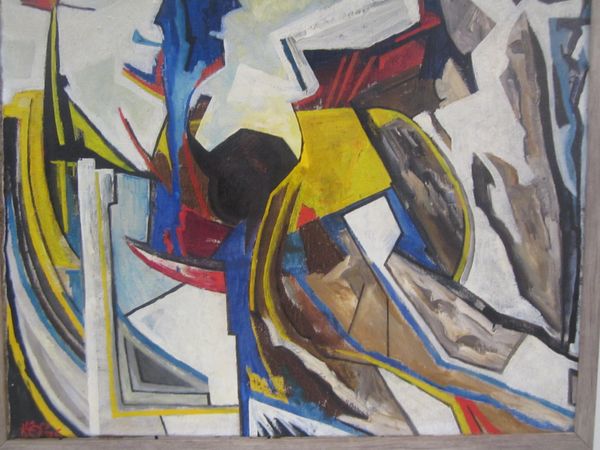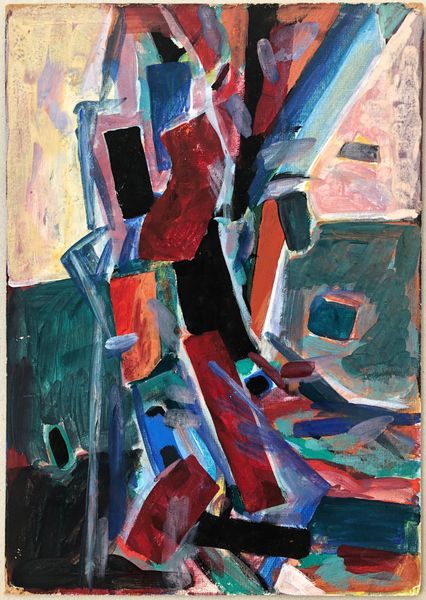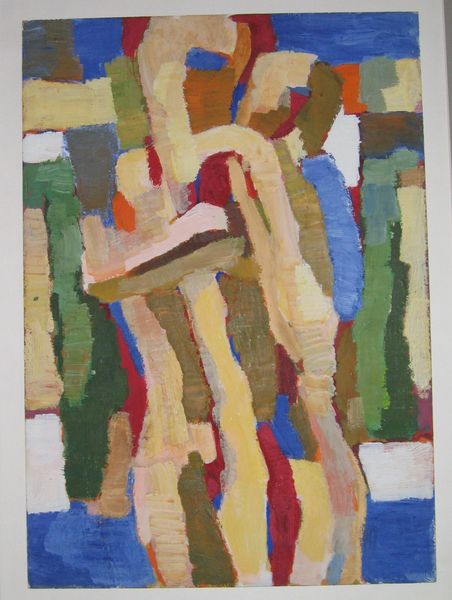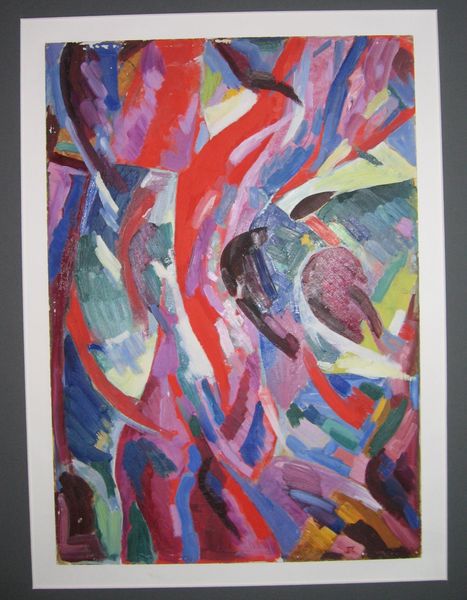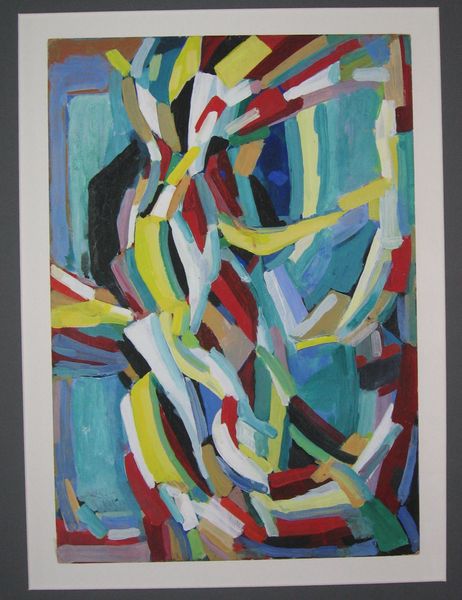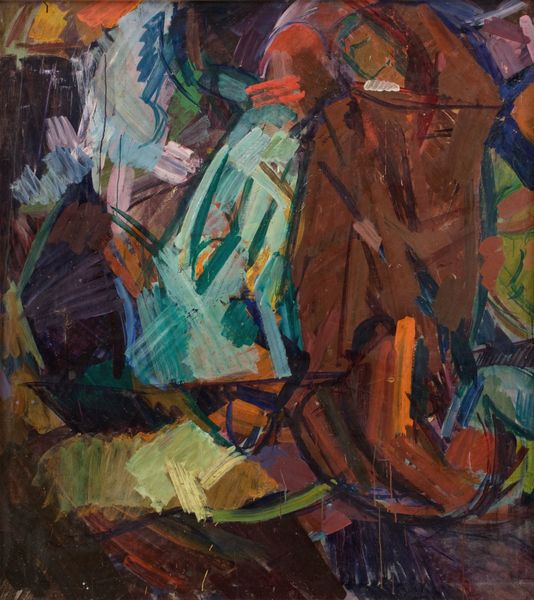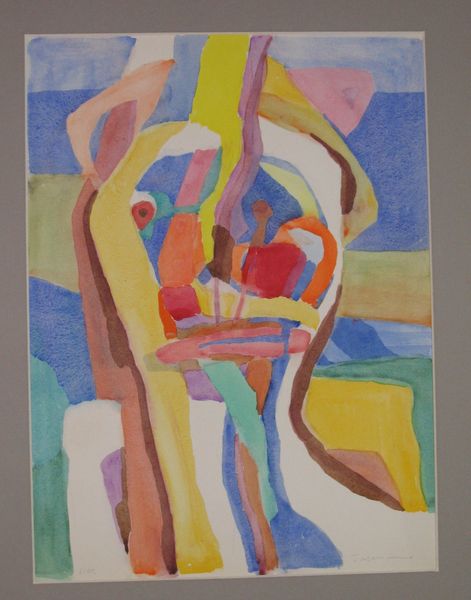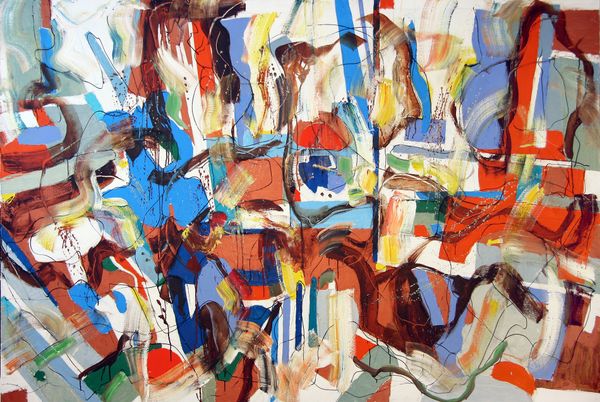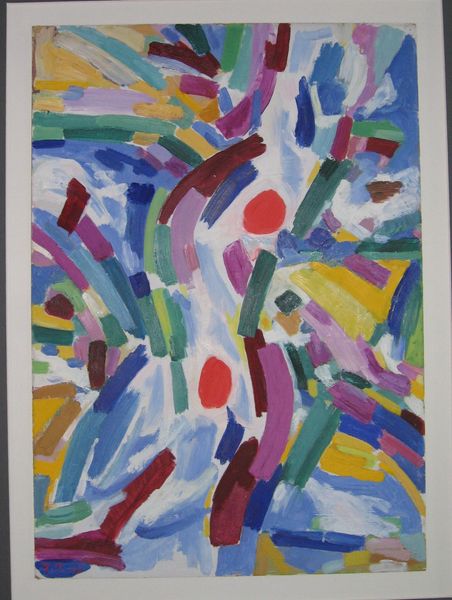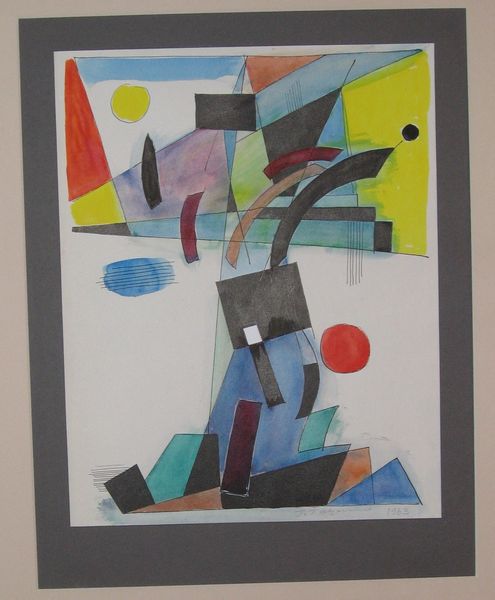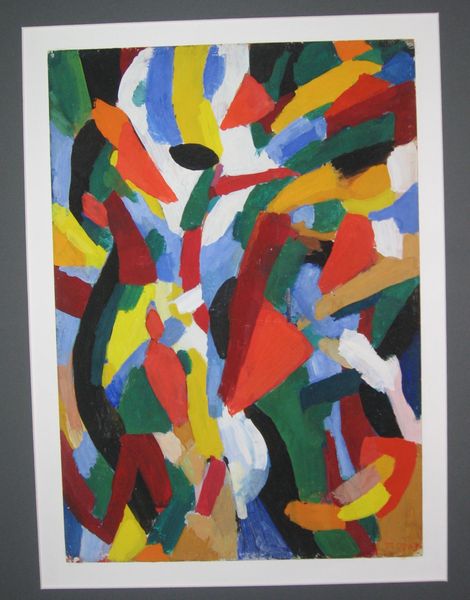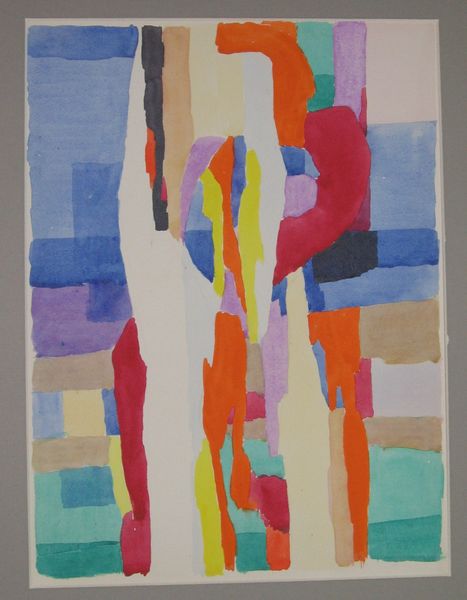
acrylic-paint, watercolor
#
abstract-expressionism
#
water colours
#
acrylic-paint
#
watercolor
#
acrylic on canvas
#
geometric
#
abstraction
#
line
#
watercolor
Copyright: Hryhorii Havrylenko,Fair Use
Curator: Looking at this energetic work by Hryhorii Havrylenko, aptly named "Composition," created in 1962 using acrylic and watercolor, one immediately gets a sense of restless movement, doesn’t one? Editor: Yes, definitely! My first impression is of a chaotic dance. It's not immediately calming, but I'm drawn in by the stark contrast of colors and geometric shapes seemingly struggling against one another. The red, particularly, feels quite forceful. Curator: Forceful indeed! Havrylenko was, after all, working during a time of shifting political and social landscapes. Acrylic and watercolor allowed for rapid layering, a kind of immediate response, wouldn’t you agree? Consider also that access to materials and artistic freedoms were fraught, reflecting a tension between artistic expression and ideological constraint. Editor: Absolutely. I read this interplay of rigid lines and fluid washes through that lens. Are the sharp angles a nod to modernist structures? The muted earth tones remind me of eroded landscapes; perhaps these are visual metaphors for societal fractures, resistance, or even hidden acts of rebellion against an oppressive political system, where cultural production itself becomes a site of struggle. Curator: An intriguing perspective. I see the layering of acrylics and watercolors as speaking to a sort of building, dismantling, and rebuilding that directly translates to his lived process. Think about where these paints were produced. By examining material sources and the economic and material conditions of the time, it prompts consideration of artistic labour and access to resources. The visible brushstrokes expose process, rejecting perfection in favour of honest rendering of the act of making. Editor: It's fascinating to consider how constraints on material also fueled ingenuity. It raises a compelling point about authorship. Who truly controlled the means and messaging of the artworks coming out of Ukraine at that moment? Whose narratives were centered? Curator: A very valid question. I feel we can appreciate the work as an authentic voice amid that tension. Editor: I concur. Seeing the geometric patterns fighting for dominance evokes not just an aesthetic sense but reminds one of broader systemic contestations happening at this time. I’ll certainly keep my eyes on the undercurrents next time!
Comments
No comments
Be the first to comment and join the conversation on the ultimate creative platform.
